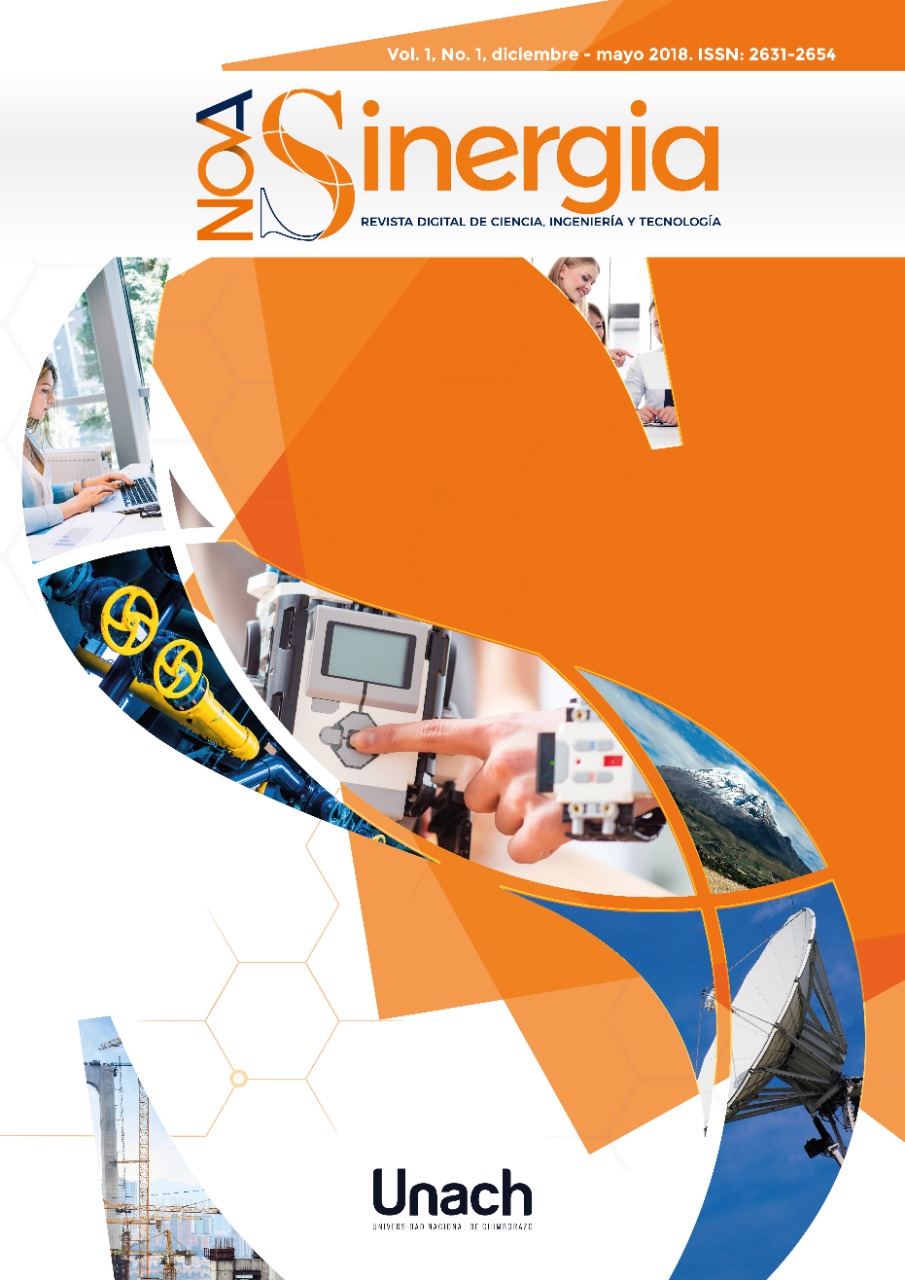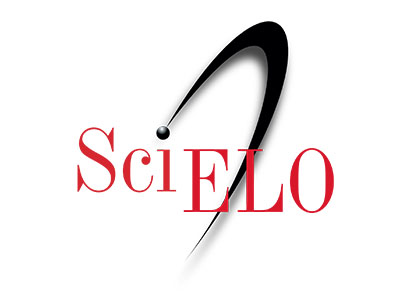Therapeutic potential of organometallic compounds in the cancer treatment. A short review
DOI:
https://doi.org/10.37135/unach.ns.001.01.02Keywords:
Therapeutics agents, cancer, organometallic compounds, ligands, transition metalsAbstract
According to the World Health Organization (WHO), cancer is the second cause of death in the world, almost one out of every six deaths globally is due to this disease. In chemistry area, efforts are being made to better investigate anticancer compounds, and organometallic reagents offer an interesting opportunity, for a synergistic effect between the medicinal properties of the ligands and the chemical characteristics of the transition metals. In this article, we present a short review of some advances in anticancer organometallic compounds. The review indicates that small structural changes implicate large changes in anticancer activity, which generates new possibilities more specific chemotherapies, with less side-effects and economically more affordable.
Downloads
References
- Bera, K., Samarpan, M., Maity, M., Mandal, Ch. & Maiti, N.C. (2018). Porphyrin−Gold Nanomaterial for Efficient Drug Delivery to Cancerous Cells. ACS Omega, 3, 4602-4619.
- Berger, G., Grauwet, K., Zhang, H., Hussey, A.M., Nowicki, M.O., Wang, D.I., Chiocca, E.A., Lawler, S.E. & Lippard, S.J. (2018). Anticancer activity of osmium(VI) nitrido complexes in patient-derived glioblastoma initiating cells and in vivo mouse models. Cancer Letters, 416, 138-148.
- Blanckenberg, A., Aliwaini, S., Kimani, S.W., van Niekerk, A., Neumann, A., Prince, S. & Mapolie, S.F. (2017). Preparation, characterization and evaluation of novel 1,3,5-triaza-7-phosphaadamantane (PTA)-based palladacycles as anti-cancer agents. Journal of Organometallic Chemistry, 851, 68-78.
- Bochmann, M. (2015). Organometallics and Catalysis. Oxford: Oxford University Press.
- Braga, S.S. & Silva, A.M.S., (2013). A New Age for Iron: Antitumoral Ferrocenes. Organometallics, 32(20), 5626-5639.
- Buchel, K.H., Moretto, H-H. & Woditsch,P. (2003). Industrial Inorganic Chemistry. Weinheim: Wiley-VCH.
- Calderazzo, F. (1990). Organometallic derivatives of palladium, platinum, and gold. Journal of Organometallic Chemistry, 400(1-2), 303-320.
- Chirik, P.J. (2010). Group 4 Transition Metal Sandwich Complexes: Still Fresh after Almost 60 Years. Organometallics, 29 (7), 1500-1517.
- Contreras, R.R. & Cardozo, E. (2015). Conceptos de nanoquímica. Capítulo 1, p. 1-28. En: Lárez-Velásquez, C., Koteich-Khatib, S., López-González, F. (Editores). Nanotecnología: Fundamentos y Aplicaciones. Avances en Química. Mérida: Departamento de Química – ULA.
- Contreras, R.R. (2014). Materiales híbridos: una aproximación a la química de los compuestos organometálicos. Mérida: Ediciones del CDCHTA-ULA.
- Contreras, R.R., Aranguren, J.N., Bellandi, F. & Gutiérrez, A. (2012). Una nueva generación de fármacos a base de compuestos organometálicos. CIENCIA, 20 (Número especial), 15-24.
- Contreras, RR. (2012). Conozca más los alimentos. Mérida. Ediciones ULA, Vicerrectorado Académico.
- Cornils, B. & Herrmann, W.A. (2017). Applied Homogeneous Catalysis with Organometallic Compounds. Weinheim: Wiley-VCH.
- Crabtree, R.H. (2014). The Organometallic Chemistry of the Transition Metals (6th Edition). New Jersey: Wiley.
- Cornils, B. & Herrmann, W.A. (2004). Aqueous-Phase Organometallic Catalysis: Concepts and Applications. Weinheim. Wiley-VCH.
- Cutillas, N., Yellol, G.S., de Haro, C., Vicente, C., Rodríguez, V. & Ruiz, J. (2013). Anticancer cyclometalated complexes of platinum group metals and gold. Coordination Chemistry Reviews, 257(19-20), 2784-2797.
- de Frémont, P., Marion, N. & Nolanb, S.P. (2009). Carbenes: Synthesis, properties, and organometallic chemistry. Coordination Chemistry Reviews, 253, 862-892.
- de la Cueva-Alique, A., Muñoz-Moreno, L., Benabdelouahab, Y., Elie, BE., El Amrani, MA., Mosquera, MEG., Contel, M., Bajo, AM., Cuenca, T. & Royo, E. (2016). Novel enantiopure cyclopentadienyl Ti(IV) oximato compounds as potential anticancer agents. Journal of Inorganic Biochemistry, 156, 22-34.
- Donzello, M.P., Vittori, D., Viola, E., Manet, I., Mannina, L., Cellai, L., Monti, S. & Ercolani, C. (2011). Tetra-2,3-pyrazinoporphyrazines with Externally Appended Pyridine Rings. 9. Novel Heterobimetallic Macrocycles and Related Hydrosoluble Hexacations as Potentially Active Photo/Chemotherapeutic Anticancer Agents. Inorganic Chemistry. 50(16), 7391-7402.
- Fernández-Gallardo, J., Elie, B.T., Sulzmaier, F.J., Sanaú, M., Ramos, J.W. & Contel, M. (2014). Organometallic Titanocene-Gold Compounds as Potential Chemotherapeutics in Renal Cancer. Study of their Protein Kinase Inhibitory Properties. Organometallics, 33, 6669-6681.
- Fontal, B. (traductor). (2005). Enfrentando los Elementos. Mérida: Ediciones del Vicerrectorado Académico de la Universidad de Los Andes.
- Galanski, M., Arion, V.B., Jakupec, M.A. & Keppler, B. K. (2003). Recent Developments in the Field of Tumor-Inhibiting Metal Complexes. Current Pharmaceutical Design, 9, 2078-2089.
- Gasser, G., Ott, I. & Metzler-Nolte, N., (2011) Organometallic Anticancer Compounds. Journal of Medicinal Chemistry, 54, 3-25.
- Geiger, W.R. (2007). Organometallic Electrochemistry: Origins, Development, and Future. Organometallics, 24, 5738-5765.
- Hanif, M., Babak, M.B. & Hartinger, Ch.G. (2014). Development of anticancer agents: wizardry with osmium. Drug Discovery Today, 19(10), 1640-1648.
- Harry, A.G., Butler, W.E., Manton, J.C., Pryce, M.T., O’Donovan, N., Crown, J., Rai, D.K. & Kenny, P.T.M. (2014). The synthesis, structural characterization and in vitro anticancer activity of novel 1-alkyl-10-N-para-(ferrocenyl) benzoyl dipeptide esters. Journal of Organometallic Chemistry, 757, 28-35.
- Harry, A.G., Murphy, J.P., O'Donovan, N., Crown, J., Rai, D.K. & Kenny, P.T.M. (2017). The synthesis, structural characterization and biological evaluation of novel N-{para-(ferrocenyl) ethynyl benzoyl} amino acid and dipeptide methyl and ethyl esters as anticancer agents. Journal of Organometallic Chemistry, 846, 379-388.
- Hillard, E.A. & Jaouen, G. (2011). Bioorganometallics: Future Trends in Drug Discovery, Analytical Chemistry, and Catalysis. Organometallics, 30(1), 20-27.
- Huang, K-B., Wang, F-Y., Tang, X-M., Feng, H-W., Chen, Z-F., Liu, Y-Ch., Liu, Y-N. & Liang, H. (2018). Organometallic Gold(III) Complexes Similar to Tetrahydroisoquinoline Induce ER-Stress-Mediated Apoptosis and Pro-Death Autophagy in A549 Cancer Cells. Journal of Medicinal Chemistry, 61, 3478-3490.
- Jaouen, G. & Salmain, M., (2015). Bioorganometallic Chemistry: Applications in Drug Discovery, Biocatalysis, and Imaging. Weinheim: Wiley-VCH.
- Klajner, M., Licona, C., Fetzer, L., Hebraud, P., Mellitzer, G., Pfeffer, M., Harlepp, S. & Gaiddon, C. (2014). Subcellular Localization and Transport Kinetics of Ruthenium Organometallic Anticancer Compounds in Living Cells: A Dose-Dependent Role for Amino Acid and Iron Transporters. Inorganic Chemistry, 53, 5150−5158.
- Kauffman, G.B. (1983). The Discovery of Ferrocene, the First Sandwich Compound. Journal of Chemical Education, 60, 185-186.
- Kowalski, K. (2016). Ferrocenyl-nucleobase complexes: Synthesis, chemistry and applications. Coordination Chemistry Reviews, 317:132-156.
- Lawrance, G.A. (2010). Introduction to coordination chemistry. Wiltshire: Wiley.
- Lazarevic, T., Rilak, A. & Bugarcic, Z.D. (2017). Platinum, palladium, gold and ruthenium complexes as anticancer agents: Current clinical uses, cytotoxicity studies and future perspectives. European Journal of Medicinal Chemistry, 142, 8-31.
- Ruiz, J., Vicente, C., de Haro, C. & Bautista, D. (2013). Novel Bis-C, N-Cyclometalated Iridium(III) Thiosemicarbazide Antitumor Complexes: Interactions with Human Serum Albumin and DNA, and Inhibition of Cathepsin B. Inorganic Chemistry, 52(2), 974-982.
- Leonidova, A. & Gasser, G. (2014). Underestimated Potential of Organometallic Rhenium Complexes as Anticancer Agents. ACS Chemcal Biology, 9(10), 2180-2193.
- Lianga, J-H., Zhonga, H-J., Yanga, G., Vellaisamy, K., Ma, D-L. & Leung Ch-H. (2017). Recent development of transition metal complexes with in vivo antitumor activity. Journal of Inorganic Biochemistry, 177, 276-286.
- Liu, Z., Romero-Canelón, I., Habtemariam, A., Clarkson, G.J. & Sadler, P.J. (2014). Potent Half-Sandwich Iridium(III) Anticancer Complexes Containing C∧N-Chelated and Pyridine Ligands. Organometallics, 33(19), 5324–5333.
- Lloyd, N.C., Morgan, H.W., Nicholson, B.K. & Ronimus, R.S., (2005). The composition of Ehrlich's salvarsan: resolution of a century-old debate. Angewandte Chemie, 44(6), 941-944.
- Meléndez, E. (2012). Metallocenes as target specific drugs for cancer treatment. Inorganica Chimica Acta, 393, 36–52.
- Meier, S.M., Hanif, M., Adhireksan, Z., Pichler, V., Novak, M., Jirkovsky, E., Jakupec, M.A., Arion, V.B., Davey, C.A., Kepplera, B.K. & Hartinger, Ch.G. (2013). Novel metal(II) arene 2-pyridinecarbothioamides: a rationale to orally active organometallic anticancer agents. Chemical Science, 4, 1837-1846.
- Morris, R.E., Aird, R.E., Murdoch, P.S., Chen, H., Cummings, J., Hughes, N.D., Parsons, S., Parkin, A., Boyd, G., Jodrell, D.I. & Sadler, P.J. (2001). Inhibition of Cancer Cell Growth by Ruthenium(II) Arene Complexes. Journal of Medicinal Chemistry, 44, 3616-3621.
- Muetterties, E.L., Bleeke, J.L., Wucherer, E.J. & Albright, T.A. (1982). Structural, Stereochemical, and Electronic Features of Arene-Metal Complexes. Chemical Review, 82, 499-525.
- Naciones Unidas. (2000). Declaración del Milenio. Nueva York: ONU.
- Naciones Unidas. (2016). Objetivos de Desarrollo Sostenible, Informe 2016. Nueva York: ONU.
- Noble, B. & Peacock, R.D. (1996). Absorption, Circular Dichroism, and Luminescence Spectroscopy of Electrogenerated Δ-(Ru(bipy)3)+/0/- and Δ-(Os(bipy)3)+/0/- (bipy = 2,2‘-Bipyridine). Inorganic Chemistry, 35(6), 1616-1620
- Patrick, G. (2017). An Introduction to Medicinal Chemistry. Oxford: Oxford University Press.
- Pucci, D., Albertini, V., Bloise, R., Bellusci, A., Cataldi, A., Catapano, C.V., Ghedini, M. & Crispini., A. (2006). Synthesis and anticancer activity of cyclopalladated complexes containing 4-hydroxy-acridine. Journal of Inorganic Biochemistry, 100, 1575-1578.
- Santini, S., Pellei, M., Gandin, V., Porchia, M., Tisato, F. & Marzano, C. (2014). Advances in Copper Complexes as Anticancer Agents. Chemical Reviews, 114(1), 815-862.
- Sava G., Alessio E., Bergamo A. & Mestroni G. (1999) Sulfoxide Ruthenium Complexes: Non-Toxic Tools for the Selective Treatment of Solid Tumour Metastases. En: Clarke M.J., Sadler P.J. (eds.) Metallopharmaceuticals I. Topics in Biological Inorganic Chemistry, vol 1. Springer, Berlin, Heidelberg.
- Southam, H.M., Butler, J.A., Chapman, J.A. & Poole, R.K. (2017). The Microbiology of Ruthenium Complexes. Advances in Microbial Physiology, 71, 1-96.
- Suntharalingam, K., Johnstone, T.C., Bruno, P.M., Lin, W., Hemann, M.T. & Lippard, S.J. (2014). Bidentate Ligands on Osmium(VI) Nitrido Complexes Control Intracellular Targeting and Cell Death Pathways. Journal of the American Chemical Society, 135(38), 14060−14063.
- Top, S., Tang, J., Vessières, A., Carrez, D., Provot, Ch. & Jaouen, G. (1996). Ferrocenyl hydroxytamoxifen: a prototype for a new range of oestradiol receptor site-directed cytotoxics. Chemical Communications, 8, 955-956.
- Tunes, L.G., de J. Franco, Ch.H., Francisco, T.M., Correa, Ch.C., Murta, S.M.F., Monte-Neto, R.L., Silva, H., Fontes, A.P.S. & de Almeida, M.V. (2017). Novel gold(I) complexes with 5-phenyl-1,3,4-oxadiazole-2-thione and phosphine as potential anticancer and antileishmanial agents. European Journal of Medicinal Chemistry, 127, 727-739.
- Valero, M., Castiglione, F., Mele, A., da Silva, M.A., Grillo, I., González-Gaitano, G. & Dreiss, C.A. (2016). Competitive and Synergistic Interactions between Polymer Micelles, Drugs, and Cyclodextrins: The Importance of Drug Solubilization Locus. Langmuir, 32(49), 13174-13186.
- van Staveren, D.R. & Metzler-Nolte, N. (2004). Bioorganometallic Chemistry of Ferrocene. Chemical Review, 104(12), 5931-5986.
- World Health Organization. (2018). Cancer Report. Geneva: WHO Press.
- Zhang, P. & Sadler, P.J. (2017). Advances in the design of organometallic anticancer complexes. Journal of Organometallic Chemistry, 839, 5-14.
- Zhou, M., Tian, M. & Li, Ch. (2016). Copper-Based Nanomaterials for Cancer Imaging and Therapy. Bioconjugate Chemistry, 27(5), 1188-1199.
- Zou, T., Lok, Ch-N., Wan, P-K., Zhang, Z-F., Fung, S-K. & Che Ch-M. (2018). Anticancer metal-N-heterocyclic carbene complexes of gold, platinum and palladium. Current Opinion in Chemical Biology, 43, 30-36.







